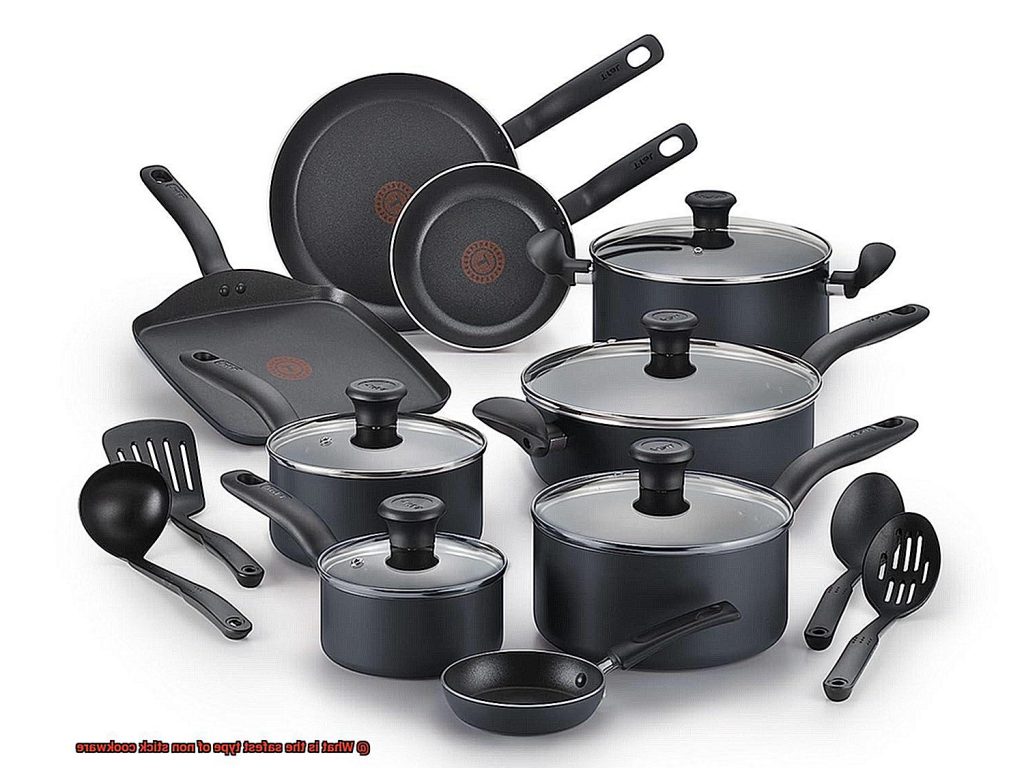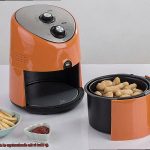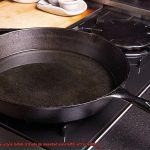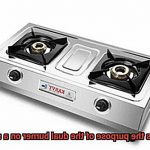Are you tired of scrubbing and scraping food off your old pans? Non-stick cookware has become increasingly popular for its convenience and ease of use. But, with the rise in popularity comes concerns about the health risks associated with non-stick coatings. We’ve all heard horror stories about toxic fumes released from overheated non-stick pans causing illness or even death in extreme cases. So, what is the safest type of non-stick cookware?
In this blog post, we’ll explore the world of non-stick cookware and take a closer look at the different types available on the market. We’ll discuss the pros and cons of each type, providing helpful tips on safe usage and maintenance. You’ll learn about popular non-stick coating materials like PTFE, PFOA, and ceramic, and discover which one is safest for your health.
But that’s not all – we’ll also answer some commonly asked questions about non-stick cookware such as “how many uses can you get out of a non-stick pan?” or “how do you know when to replace a non-stick pan?”
By the end of this article, you’ll have gained a comprehensive understanding of non-stick cookware and be equipped with essential knowledge to make an informed decision on what type is safest for you and your family. So let’s jump right in.
Contents
Pros and Cons of Traditional Non-Stick Cookware
Cooking can be a joyous experience, but it can also be a hassle, especially when it comes time to clean up. For this reason, non-stick cookware has become a popular choice for many home cooks. However, not all non-stick cookware is created equal, and traditional non-stick cookware may have both pros and cons that you need to consider before making a purchase.
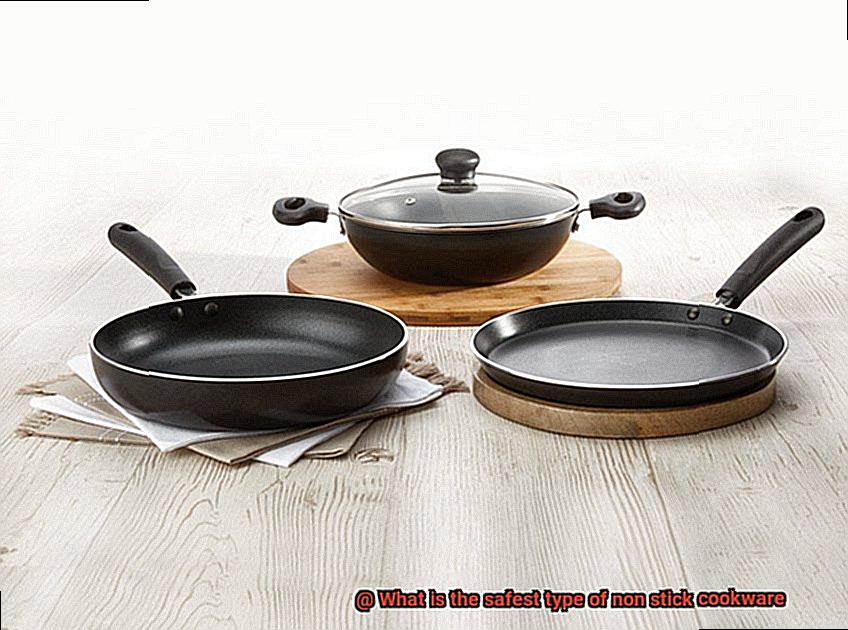
Pros
- Easy to clean: Traditional non-stick cookware is known for being very easy to clean. Food particles do not stick to the surface, which makes cleaning up a breeze. This feature makes it an excellent option for busy home cooks who want to spend less time cleaning up after cooking.
- Requires less oil: As food does not stick to the surface of traditional non-stick cookware, less oil is required for cooking, making it a healthier option. If you’re watching your fat intake, this feature can be especially beneficial.
- Affordable: Traditional non-stick cookware is generally more affordable than other types of cookware. This makes it an excellent option for those on a budget who still want quality cookware.
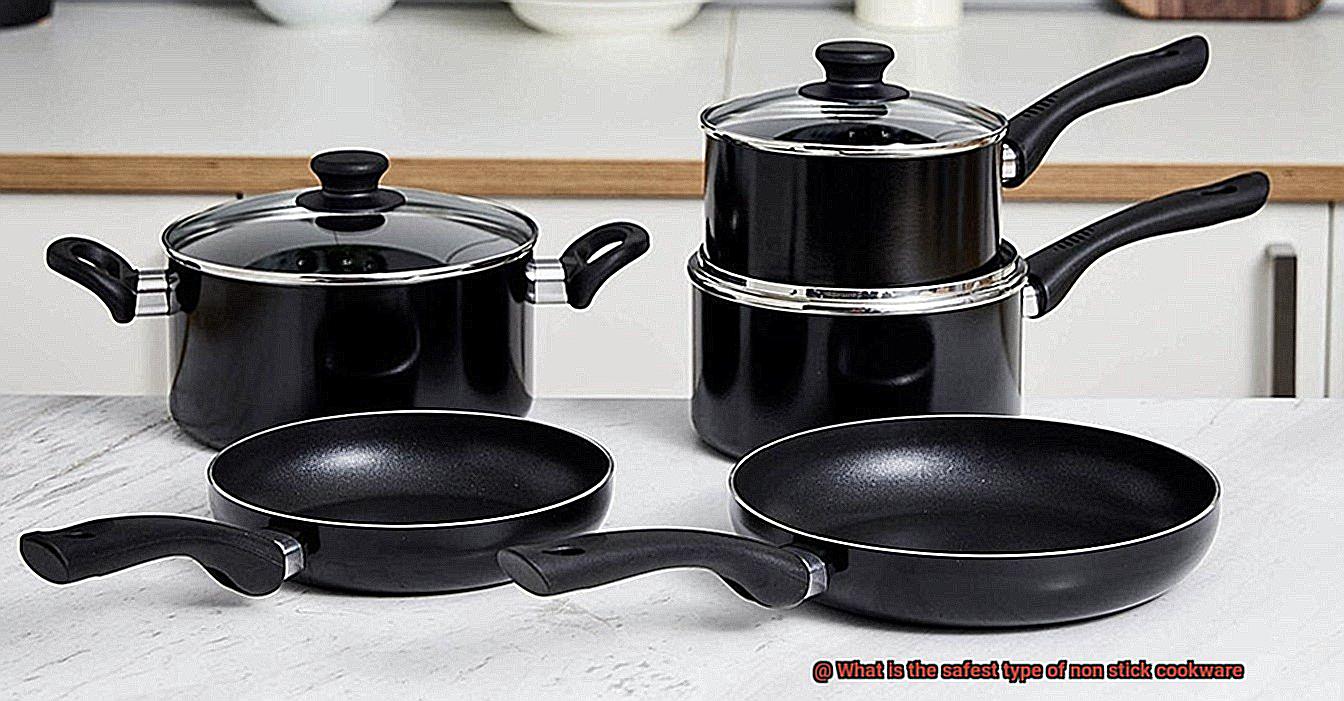
Cons
- Durability: While traditional non-stick coatings are excellent initially, they can wear off over time, especially if the cookware is not cared for properly. This can lead to uneven heating and decreased non-stick properties over time.
- Toxic fumes: When traditional non-stick cookware is heated to high temperatures, it can release toxic fumes that are harmful when inhaled. This can be particularly concerning for those with respiratory issues or small children in the home.
- Scratching: Traditional non-stick coatings can be easily scratched by metal utensils which can damage the surface. This can lead to uneven heating and decreased non-stick properties over time.
It’s important to note that while traditional non-stick cookware may be convenient, it may not always be the safest option for cooking. It’s essential to handle this type of cookware with care and avoid overheating it to prevent releasing harmful fumes.
If you’re looking for a safer and more durable option, consider ceramic-coated cookware. Ceramic-coated cookware is made without harmful chemicals and is scratch-resistant, making it a long-lasting option for your kitchen.
Ceramic-Coated Cookware: A Safer Alternative
Look no further than ceramic-coated cookware, the cookware set that offers a myriad of benefits.
Firstly, ceramic-coated cookware is free of harmful chemicals such as PFOA and PFOS which are commonly found in traditional non-stick coatings. This means you can cook with ease, avoiding the release of toxic fumes or chemicals into the air.
What’s more, ceramic-coated cookware is highly durable and scratch-resistant. The ceramic material used in its construction is much harder than traditional non-stick coatings, making it less likely to chip or flake off during cooking. Additionally, it can withstand high temperatures without compromising its non-stick properties, making it perfect for any type of cooking.
Cleaning up after cooking is also a breeze with ceramic-coated cookware. Its easy-to-clean surface allows food to slide off easily, meaning there’s no need for harsh scrubbing pads or abrasive cleaners. Plus, most sets are dishwasher safe for added convenience.
Versatility is another advantage of ceramic-coated cookware. It can be used on all types of stovetops including gas, electric and induction ranges, and is also oven safe – making it ideal for roasting and baking.
However, it’s essential to choose a high-quality brand when selecting your ceramic-coated cookware set. Some lower quality sets may contain harmful substances such as lead or cadmium in the ceramic glaze which can pose potential health risks if ingested.
Benefits of Ceramic-Coated Cookware
One of the biggest benefits of ceramic-coated cookware is its safety. Unlike traditional non-stick coatings, ceramic is a natural material that is free from harmful chemicals such as PFOA and PTFE. This means you can cook with peace of mind, knowing that you’re not exposing your family to potentially harmful substances.
But the safety benefits are just the beginning. Ceramic-coated cookware also boasts a non-stick surface that makes cooking a breeze, allowing for easy food release without any residue. It requires less oil or butter for cooking, making it a healthier option for those who are health-conscious.
Ceramic-coated cookware is also incredibly versatile. It can be used on all types of stovetops, including gas, electric, and induction, and can even be used in the oven or under the broiler. Whether you’re baking, frying, or sautéing, ceramic-coated cookware has got you covered.
Moreover, ceramic-coated cookware is scratch-resistant and highly durable, so you don’t have to worry about it degrading over time. It’s the perfect choice for busy kitchens where pots and pans are used frequently. Its durability also makes it an economical option in the long run as it doesn’t need to be replaced frequently.
How to Choose the Right Ceramic-Coated Cookware
When it comes to choosing the right ceramic-coated cookware for your kitchen, there are several things to keep in mind. From the quality of the coating to the materials used in manufacturing, here are five sub-sections to help guide your decision.
Material Composition
The first thing to consider when choosing ceramic-coated cookware is the material composition. Look for cookware that is labeled as “100% ceramic.” This indicates that the entire pot or pan is made from ceramic material, rather than just having a ceramic coating on top of another material. This ensures that there are no potentially harmful materials leaching into your food.
Quality of Ceramic Coating
The quality of the ceramic coating is also important. A high-quality ceramic coating should be thick and durable, able to withstand high heat without chipping or peeling. It should also be free from any defects or bubbles that could compromise its integrity. Look for cookware that offers a warranty on the ceramic coating to ensure that you’re getting a durable product.
Transparency in Manufacturing
Choose a brand that is transparent about their manufacturing process and materials used. Look for brands that use non-toxic glazes and are free from heavy metals like lead or cadmium. If a brand isn’t forthcoming about their materials or manufacturing process, it’s best to choose another option.
Construction Quality
The overall construction of the cookware is also important. Ceramic-coated cookware should have a sturdy base that distributes heat evenly and a comfortable handle that stays cool during cooking. Check for even thickness throughout the pot or pan and ensure that handles are securely attached.
Care and Maintenance
Finally, consider how easy it is to care for and maintain your ceramic-coated cookware. Avoid using abrasive sponges or harsh cleaning agents, as these can damage the coating. Instead, use a soft sponge or cloth with mild soap and warm water to clean your cookware. Additionally, avoid using metal utensils on your ceramic-coated cookware, as these can scratch and damage the surface. Look for cookware that is dishwasher safe if you prefer the convenience of machine washing.
Tips for Cooking with Ceramic-Coated Cookware
Ceramic-coated cookware has become a popular choice for those who want a non-toxic and durable cooking surface. However, it’s important to use and care for this type of cookware properly to ensure its longevity and safety. Here are five key tips for cooking with ceramic-coated cookware:
Use Low or Medium Heat
Ceramic coatings can be damaged by high temperatures, so it’s important to use low or medium heat settings when cooking with these pots and pans. Overheating the coating can cause it to break down and release harmful chemicals into your food.
Opt for Wooden or Silicone Utensils
Metal utensils can scratch the ceramic coating of the cookware, reducing its effectiveness. Instead, use wooden or silicone utensils that are gentle on the surface of the coating.
Clean Gently
To maintain the non-stick properties of the ceramic coating, it’s important to clean your cookware properly. Avoid using abrasive cleaners or scrubbers that can damage the coating. Instead, use a soft sponge or cloth with mild soap and water to gently clean the surface of the cookware.
Store Carefully
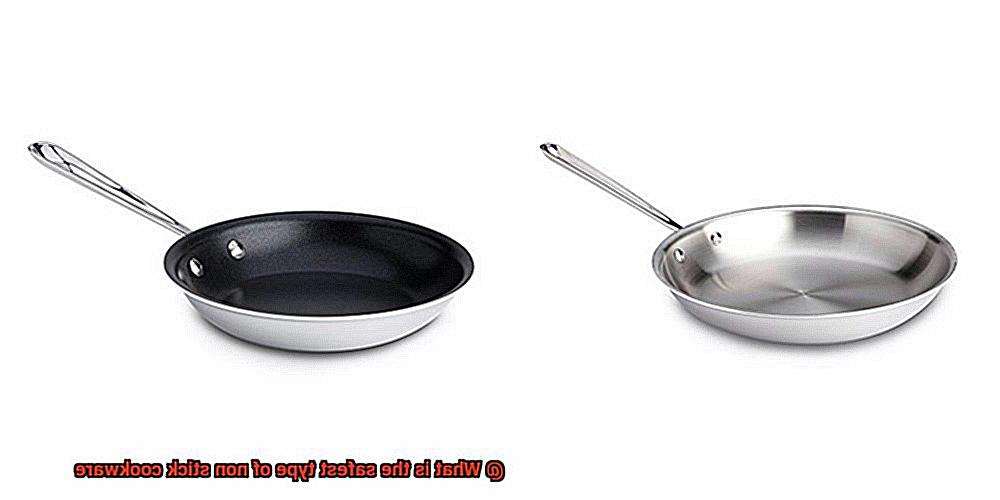
Storing your ceramic-coated cookware properly is essential in maintaining its condition. Consider investing in pot protectors or storing each pot and pan separately to prevent them from rubbing against each other and potentially scratching the coating.
Enjoy Versatility
Ceramic-coated cookware is versatile and can be used on gas, electric, and induction cooktops. This type of cookware is perfect for cooking up your favorite dishes, whether you’re simmering a sauce or sautéing vegetables.
Safety Precautions to Take When Using Non-Stick Cookware
These kitchen tools are indeed convenient for efficient cooking and cleaning, but safety should always come first. As an expert on the topic, I’m here to share some essential safety precautions to keep in mind when using non-stick cookware.
First and foremost, always follow the manufacturer’s instructions. These guidelines will help you make the most out of your non-stick cookware while also ensuring your safety. The instructions may include avoiding high heat, not using metal utensils, and using gentle cleaning products.
Overheating your non-stick cookware can be dangerous. It can cause the non-stick coating to break down and release toxic fumes that can harm your health if inhaled. To prevent this, always use low to medium heat settings when cooking with non-stick cookware.
Using the wrong utensils can also damage the coating on your non-stick cookware. Metal utensils can scratch or break down the coating, leading to harmful chemicals seeping into your food. Instead of metal utensils, opt for silicone or wooden ones that won’t damage the coating.
Proper cleaning and maintenance are also crucial for non-stick cookware safety. Avoid using harsh cleaning products or abrasive scrubbers that can damage the coating and reduce its effectiveness over time. Instead, use mild dish soap and a soft sponge or cloth to clean your non-stick cookware after each use.
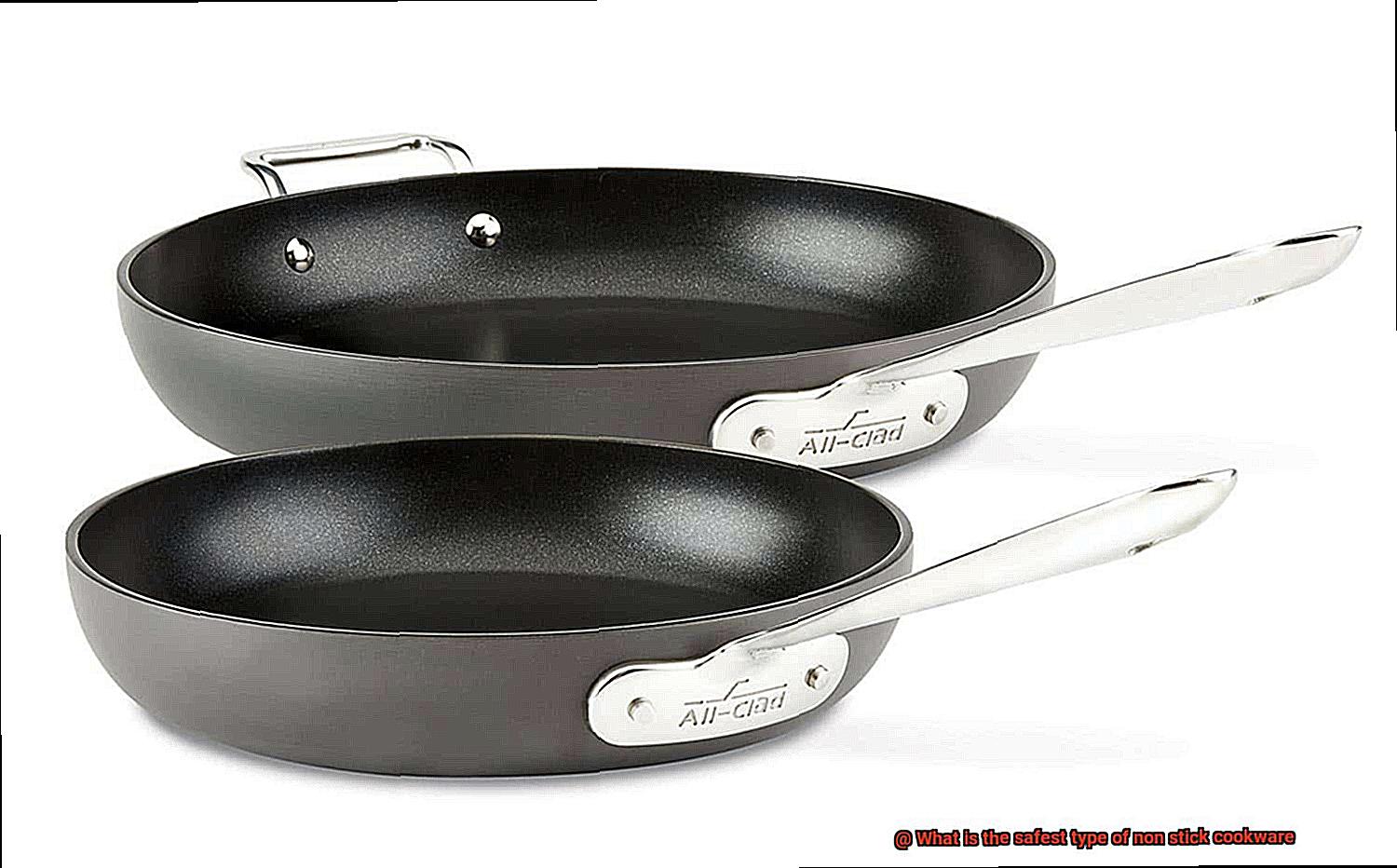
Common Mistakes to Avoid When Using Non-Stick Cookware
To avoid these issues, it’s essential to steer clear of these common pitfalls.
One of the most frequent missteps people make is using metal utensils on non-stick cookware. Unfortunately, this can lead to scratches and damage to the delicate non-stick coating, resulting in food sticking and potentially harmful chemicals being released into your food. To avoid this issue, opt for silicone or wooden utensils to keep your cookware in pristine condition.
Another mistake people make is turning up the heat too high when cooking with non-stick cookware. The high temperatures can break down the coating, leading to harmful chemicals being released into your food and damaging the cookware itself. Instead, choose low to medium heat when cooking with non-stick pans or pots.
To prevent bacterial buildup over time, it’s important to properly clean your non-stick cookware after each use. Food particles and oils can quickly accumulate in the coating, which can lead to a buildup of bacteria over time. Make sure to clean your non-stick cookware thoroughly with warm soapy water and a gentle sponge or cloth.
Lastly, stacking your non-stick cookware without any protection in between can lead to scratches and damage to the coating. To avoid this issue, place a protective layer between each piece of cookware before stacking them.
Cleaning and Caring for Your Ceramic-Coated Cookware
Ceramic-coated cookware is a durable and reliable alternative, but only if it’s properly cleaned and cared for. As an expert in this field, I’m here to provide some tips on how to keep your ceramic-coated cookware in great condition.
Firstly, always allow your cookware to cool down before washing it. Pouring cold water onto hot pans can cause them to warp or crack, which can lead to irreparable damage. Instead, let them cool down a bit before soaking them in warm, soapy water.
When cleaning your ceramic-coated cookware, be sure to avoid abrasive materials that can scratch the coating. Use a soft sponge or cloth to gently scrub the surface of the pan. In case there are stubborn stains or burnt-on food particles, try using baking soda or white vinegar to help loosen them up.
To use baking soda, sprinkle it onto the surface of the pan and add a few drops of water to create a paste. Let it sit for a few minutes before scrubbing it off with a soft sponge or cloth. Alternatively, fill the pan with equal parts water and white vinegar and bring it to a simmer on the stovetop. This will help loosen any stubborn stains or food particles that are stuck to the surface.
After washing your ceramic-coated cookware, ensure that you dry it completely before storing it away. Leaving it damp can lead to mold growth and damage to the coating over time. You can either air dry your cookware or use a soft towel to dry it off manually.
In addition to these basic tips, here are some additional ways to care for your ceramic-coated cookware:
- Avoid using metal utensils on the surface of your cookware as they can scratch the coating.
- Don’t stack your ceramic-coated cookware on top of each other as this can also lead to scratches.
- Use low to medium heat while cooking with your ceramic-coated cookware. High heat can cause the coating to break down over time.
Conclusion
In conclusion, non-stick cookware has become a household favorite due to its convenience and ease of use. However, the health risks associated with traditional non-stick coatings have raised concerns among consumers. Toxic fumes and reduced durability are just some of the drawbacks that come with using traditional non-stick cookware.
Fortunately, ceramic-coated cookware offers a safer alternative with numerous benefits. Not only is it free of harmful chemicals, but it’s also scratch-resistant and highly durable. When selecting ceramic-coated cookware, it’s essential to consider factors such as material composition, quality of the ceramic coating, transparency in manufacturing, construction quality, and care/maintenance requirements.
Cooking with ceramic-coated cookware requires some extra care. It’s best to use low or medium heat settings and avoid metal utensils that can scratch the coating. Following manufacturer instructions carefully is crucial for ensuring the longevity and safety of your non-stick cookware.
To keep your ceramic-coated cookware in excellent condition for years to come, proper cleaning and maintenance are essential. Avoid common mistakes like using metal utensils on non-stick surfaces or turning up the heat too high while cooking.

